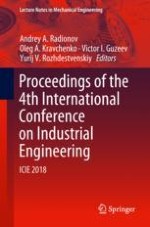2019 | OriginalPaper | Buchkapitel
Measurement of Residual Stresses in Thin-Sheet Welded Constructions of Low-Alloyed Steel
verfasst von : E. P. Nikolaeva, A. Yu. Nikolaev
Erschienen in: Proceedings of the 4th International Conference on Industrial Engineering
Aktivieren Sie unsere intelligente Suche, um passende Fachinhalte oder Patente zu finden.
Wählen Sie Textabschnitte aus um mit Künstlicher Intelligenz passenden Patente zu finden. powered by
Markieren Sie Textabschnitte, um KI-gestützt weitere passende Inhalte zu finden. powered by
